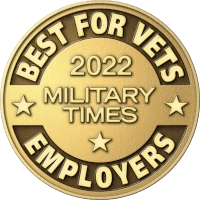By Rick Wheeler, Life Cycle Engineering
What is visual management? We see it every day, all around us. How do you know when you can safely proceed through an intersection? How do you know how fast you can drive on a stretch of highway? How do you know how fast you’re going or how much fuel you have left? In those instances, we have red, yellow and green traffic lights. We have speed limit signs and instruments on our dashboard that tell how fast we are going and how much more fuel we have. As a matter of fact, today’s cars are a great example of how we use various layers of information. At the highest level, your dashboard tells you speed, fuel level and perhaps engine rpms. It tells you what gear you’re in, forward, neutral or reverse. However, on many new cars, there are several additional levels of information available. If I push the information button on my car I can see things like air pressure in my tires, percent of life left in my oil, average speed, fuel mileage, etc. Do I need to see that level of information on a daily basis? No! Is it handy to have that information available periodically? It certainly is!
So how do we apply those same concepts to our facilities in a way that provides the most value? We use visual management boards – simple displays of information. Visual management boards, key communication tools in a lean environment, are intended to give you information at a glance. There are several different types of visual management boards, including boards for continuous improvement, project status, and point-of-use tools. In this article, we are talking about visual management boards that support manufacturing.
When developing a visual management board for a manufacturing setting we need to focus on simplicity. Typically the focus is on depicting vital measurements/information and displaying them so that information is:
- Consistent
a. All boards throughout the organization are similar with minimal variation only as processes require it. - Easy to understand by all
a. All levels of the organization use this system to get a quick sense of the health of a process, line or cell. - Visible from at least 40ft. (headers only)
a. This provides a quick look from a distance as to the health of the process, line or cell. - Colors of Green for hitting or exceeding a goal/target and Red for a miss. This is a “pass/fail” indicator so we avoid the use of yellow.
- Metrics for a visual management board
a. (P)eople – Safety (any injuries), absenteeism (who’s here so we know what to work with)
b. (Q)uality – Scrap, defects and re-work
c. (S)chedule – On track or not
d. (C)ost – Usually productivity but could be efficiency as well
e. 5S – Make housekeeping measurable and update daily conditions
How do you determine what to show on your visual management boards? Let’s break it down into some logical steps. Think about an employee, guest, supplier or corporate visitor walking into your facility to their respective “work” area. What information do they need to see? Of course, the answer depends on your industry and what is important at your facility but let me present a few ideas that you can consider.
As we first walk into a facility there should be some high-level data points that will help us understand what our company and site values are and how we are performing against them. Most businesses should focus on People, Quality, Schedule and Cost. Given that those things are important to most of us we would expect to see high-level indications of the plant’s position on them. These indications should not be too data-intense at this level of the visual management system. Usually, a simple green/red indication is appropriate.
As we move deeper into the facility the level of information should become more focused and relevant to the functions occurring in that area. We can still have the high-level indicators but we will usually slice them down to the level that is applicable to the area. For example, if we are talking about a schedule, the visual management boards will tell us where that area is against its goal for the month or campaign. We will then see additional data begin to be layered in. For example, what are the sub-operations that run in an area and where are we against the targets for those?
As we move to the functional level work areas we will see yet a deeper, more focused level of information posted on the visual management boards. This information will speak to the daily or weekly planned work for that function. It will also include information on tasks that have come up that were not planned. This information will be the focus of the shift meeting. The area leader will review this information with the area employees to ensure alignment on what work is to be done. Again, there will be additional information that is relevant to that area. This could be the status of the training objectives. In some cases, it could be information about continuous improvement projects in that area.
Of course, the most important thing about using a visual management board is how it’s used. A successful implementation would be when production teams use them effectively as a vehicle to understand gaps in performance and address these with actions to right the ship and achieve their targets. The board should be as user-specific as possible, meaning that the people responsible for the process, line or cell are the same people actually maintaining the visual management boards. It tends to build a sense of emotion behind the numbers; think of having to color Red two or three days in a row and what emotions are felt with a supervisor or within a team.
We’ve considered how to stratify the information that should be on the visual management boards but what format should be used? I’ve seen everything from manual tracking systems to fully integrated electronic systems that extract the data directly from the plant control systems. Obviously, the more automated the system is, the less time will be spent on the “administrivia” of maintaining it. However, I have seen automated systems that, while they look nice, don’t provide the relevant information in a format that is easily understood by the intended audience. And that is really the key to visual management. Like in our car example, you wouldn’t want to push a lot of buttons to find out how fast you were going. So we need to spend time understanding what information is needed on what frequency for an individual, team, department or plant to effectively manage work.
So what should you do to create or improve your visual management process? Use value stream mapping to truly understand where your bottlenecks are. Engage all of your employees in continuous improvement to relieve those bottlenecks. Develop focused key performance indicators that help measure the results and use visual management boards to communicate and align your organization.
Rick Wheeler is a Principal Consultant with Life Cycle Engineering (LCE). He has a broad range of experience in the pharmaceutical, chemical and nuclear industries. Rick trains clients on best practices and coaches corporate and site leadership teams on organizational change management. He has led many process improvement initiatives resulting in substantial cost savings. You can reach Rick at rwheeler@LCE.com.















